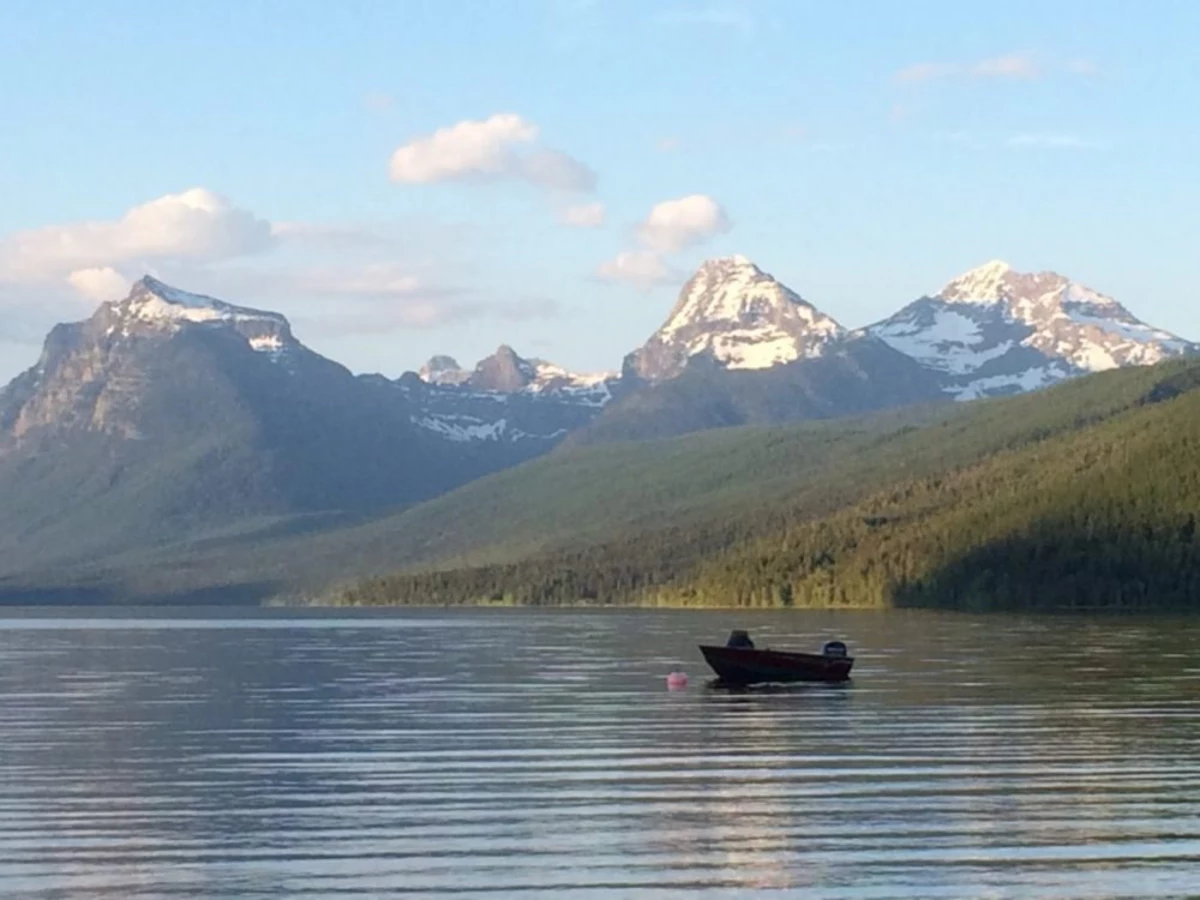Viewpoint: Even Glacier can’t escape hubris of man
Viewpoint: Even Glacier can't escape hubris of man Missoula Current


Glacier National Park’s Grand Experiment: Killing Rainbow Trout to Introduce New Species
By Steve Kelly

Glacier National Park has made the decision to proceed with its grand experiment of using poison to eliminate rainbow trout that were introduced to Gunsight Lake a century ago. Instead of restoring the lake to its original fishless state, park managers plan to introduce three new species: bull trout, cutthroat trout hybrids, and mountain whitefish. This experiment raises concerns about the potential risks and impacts on the ecosystem.
The use of rotenone, a rat poison that is now banned for use against rats, is the chosen method for killing off the undesirable fish. However, rotenone also kills non-targeted aquatic species indiscriminately, posing a significant risk to the ecosystem. The park officials are not considering alternative methods, claiming that they take too long.
This experiment involves the use of helicopters, transport equipment, poison, transplanted fish, and a motorized boat to spread the poison in an area recommended for official wilderness designation. This raises questions about the park’s commitment to managing wilderness areas as wilderness.
The Importance of Sustainable Development Goals (SDGs)
- SDG 14: Life Below Water – The experiment in Glacier National Park raises concerns about the impact on aquatic species and the delicate food chain. It is crucial to consider the preservation of marine life and ecosystems.
- SDG 15: Life on Land – The introduction of new species and the use of poison can have significant ecological consequences. It is important to minimize human intervention and preserve the natural processes that determine species diversity and habitat quality.
The proposed experiment contradicts the foundational mandates of the Wilderness Act, which aims to protect untrammeled wild country and preserve opportunities for solitude in nature. The focus on commerce, pseudo-science, and jobs seems to have outweighed the goal of protecting wilderness.
It is essential to prioritize the health and function of the entire ecosystem being manipulated, rather than focusing solely on funding and job creation. The threatened species within Glacier National Park, such as grizzly bears and lynx, should not be subjected to harassment by overbearing bureaucrats.
The potential risks to the St. Mary River aquatic ecosystem and the last native bull trout population east of the Continental Divide should not be ignored. A cautious approach that considers all options and avoids actions that threaten the ecosystem is necessary.
Conclusion
There is no quick fix to the ecological problems we face. Glacier National Park and its private funders at Glacier National Park Conservancy should prioritize the ethical principle of “non-maleficence” by refraining from causing harm before taking any action intended to do good.
To voice concerns about this ill-advised project, it is recommended to contact the Superintendent of Glacier National Park (406-888-7800) and the Glacier National Park Conservancy (406-892-3250) and demand its immediate withdrawal.
Steve Kelly is a wildlife and native fish activist, artist, gardener, and state coordinator for the Montana Green Party residing in Bozeman.
SDGs, Targets, and Indicators
-
SDG 14: Life Below Water
- Target 14.1: By 2025, prevent and significantly reduce marine pollution of all kinds, in particular from land-based activities, including marine debris and nutrient pollution.
- Indicator 14.1.1: Index of coastal eutrophication and floating plastic debris density.
-
SDG 15: Life on Land
- Target 15.1: By 2020, ensure the conservation, restoration, and sustainable use of terrestrial and inland freshwater ecosystems and their services, in particular forests, wetlands, mountains, and drylands, in line with obligations under international agreements.
- Indicator 15.1.1: Forest area as a proportion of total land area.
- Indicator 15.1.2: Proportion of important sites for terrestrial and freshwater biodiversity that are covered by protected areas, by ecosystem type.
Analysis
The article discusses the plan of Glacier National Park to use poison to kill rainbow trout planted in Gunsight Lake. Based on the content of the article, the following SDGs, targets, and indicators can be identified:
1. SDG 14: Life Below Water
The issue of using poison to kill fish in Gunsight Lake is connected to SDG 14, which focuses on the conservation and sustainable use of the oceans, seas, and marine resources. The target under this SDG that can be identified is Target 14.1, which aims to prevent and significantly reduce marine pollution of all kinds, including from land-based activities. The indicator that can be used to measure progress towards this target is Indicator 14.1.1, which measures the index of coastal eutrophication and floating plastic debris density. The use of poison in Gunsight Lake can potentially lead to pollution and harm to the aquatic ecosystem, which aligns with the target and indicator under SDG 14.
2. SDG 15: Life on Land
The issue of introducing new fish species and using poison in Gunsight Lake also relates to SDG 15, which focuses on the conservation and sustainable use of terrestrial ecosystems. The targets under this SDG that can be identified are Target 15.1, which aims to ensure the conservation, restoration, and sustainable use of terrestrial and inland freshwater ecosystems, and Target 15.5, which aims to take urgent and significant action to reduce the degradation of natural habitats. The indicators that can be used to measure progress towards these targets are Indicator 15.1.1, which measures the forest area as a proportion of total land area, and Indicator 15.1.2, which measures the proportion of important sites for terrestrial and freshwater biodiversity covered by protected areas. The introduction of new fish species and the use of poison in Gunsight Lake can potentially impact the freshwater ecosystem and habitats, which aligns with the targets and indicators under SDG 15.
Table: SDGs, Targets, and Indicators
| SDGs | Targets | Indicators |
|---|---|---|
| SDG 14: Life Below Water | Target 14.1: By 2025, prevent and significantly reduce marine pollution of all kinds, in particular from land-based activities, including marine debris and nutrient pollution. | Indicator 14.1.1: Index of coastal eutrophication and floating plastic debris density. |
| SDG 15: Life on Land | Target 15.1: By 2020, ensure the conservation, restoration, and sustainable use of terrestrial and inland freshwater ecosystems and their services, in particular forests, wetlands, mountains, and drylands, in line with obligations under international agreements. | Indicator 15.1.1: Forest area as a proportion of total land area. |
| SDG 15: Life on Land | Target 15.1: By 2020, ensure the conservation, restoration, and sustainable use of terrestrial and inland freshwater ecosystems and their services, in particular forests, wetlands, mountains, and drylands, in line with obligations under international agreements. | Indicator 15.1.2: Proportion of important sites for terrestrial and freshwater biodiversity that are covered by protected areas, by ecosystem type. |
Behold! This splendid article springs forth from the wellspring of knowledge, shaped by a wondrous proprietary AI technology that delved into a vast ocean of data, illuminating the path towards the Sustainable Development Goals. Remember that all rights are reserved by SDG Investors LLC, empowering us to champion progress together.
Source: missoulacurrent.com

Join us, as fellow seekers of change, on a transformative journey at https://sdgtalks.ai/welcome, where you can become a member and actively contribute to shaping a brighter future.







